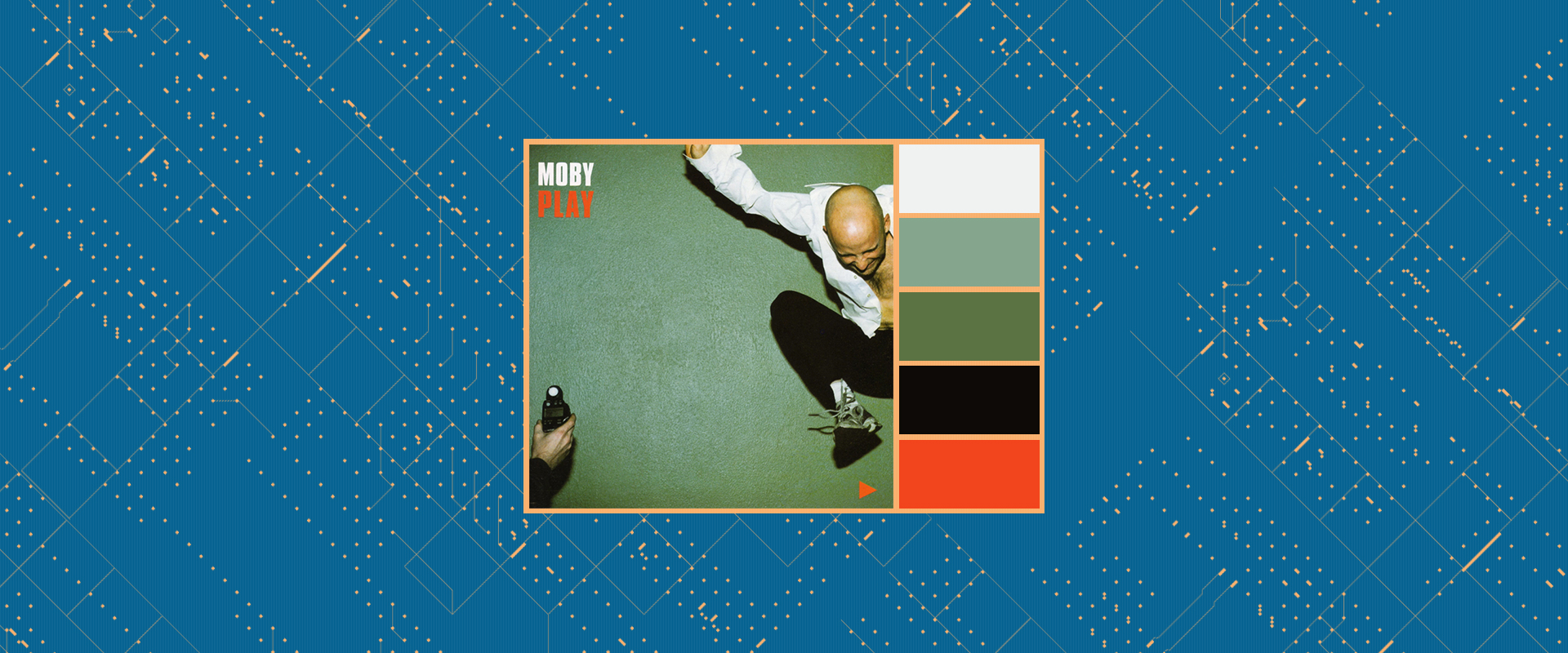Thursday Throwback is a weekly colour scheme inspired by an iconic album cover of yesteryear. This week’s throwback is the 1999 album “Play” by Moby. The colours are as follows:
| Colours | HEX | RGB | HSB | CMYK | LAB |
|---|---|---|---|---|---|
| Colour 1 | #BF3641 | 191, 54, 65 | 355, 72, 75 | 0, 71, 65, 25 | 44, 54, 26 |
| Colour 2 | #D9D7BF | 217, 215, 191 | 55, 12, 85 | 0, 0, 11, 14 | 85, -3, 12 |
| Colour 3 | 8C5D42 | 140, 93, 66 | 22, 53, 55 | 0, 33, 52, 45 | 43, 16, 23 |
| Colour 4 | #402A22 | 64, 42, 34 | 16, 47, 25 | 0, 34, 46, 74 | 19, 9, 9 |
| Colour 5 | #BFA79F | 191, 167, 159 | 15, 17, 75 | 0, 12, 16, 25 | 70, 7, 7 |
Play, the fifth studio album by American electronic musician Moby, marked a significant milestone in his career and the electronica genre. Released on May 17, 1999, through Mute Records internationally and V2 Records in North America, the album’s creation began in mid-1997, following the release of Moby’s fourth album, Animal Rights (1996), which had deviated from his electronica style. With Play, Moby aimed to return to electronica, blending downtempo with blues and roots music samples. Originally intended as his final record, the album was recorded at Moby’s home studio in Manhattan.
While some of Moby’s earlier work had garnered critical and commercial success within the electronic dance music scene, Play became both a critical and commercial phenomenon. Initially met with lackluster sales, it topped numerous charts months after its release and was certified platinum in over 20 countries. The album introduced Moby to a worldwide mainstream audience, not only through hit singles that helped it dominate worldwide charts for two years but also through unprecedented licensing of its songs in films, television shows, and commercials. Play eventually became the biggest-selling electronica album of all time, with over 12 million copies sold worldwide, and Moby’s breakthrough album.
In recognition of its impact, Play was ranked number 341 on Rolling Stone magazine’s list of the 500 greatest albums of all time in 2003 and 2012.
The album cover features a photograph of Moby mid leap wearing a white shirt and black trousers. According to Moby himself, it was “…taken in the Chelsea Hotel (New York) long before it became luxury condos.” The photo was taken by Corinne Day, a fashion photographer and former model who’s work could be seen in magazines such as The Face, I-D and Vogue.
Did you like this week’s colour scheme? Do you fancy using it for your next release cover? Then visit the shop or contact the founder!

